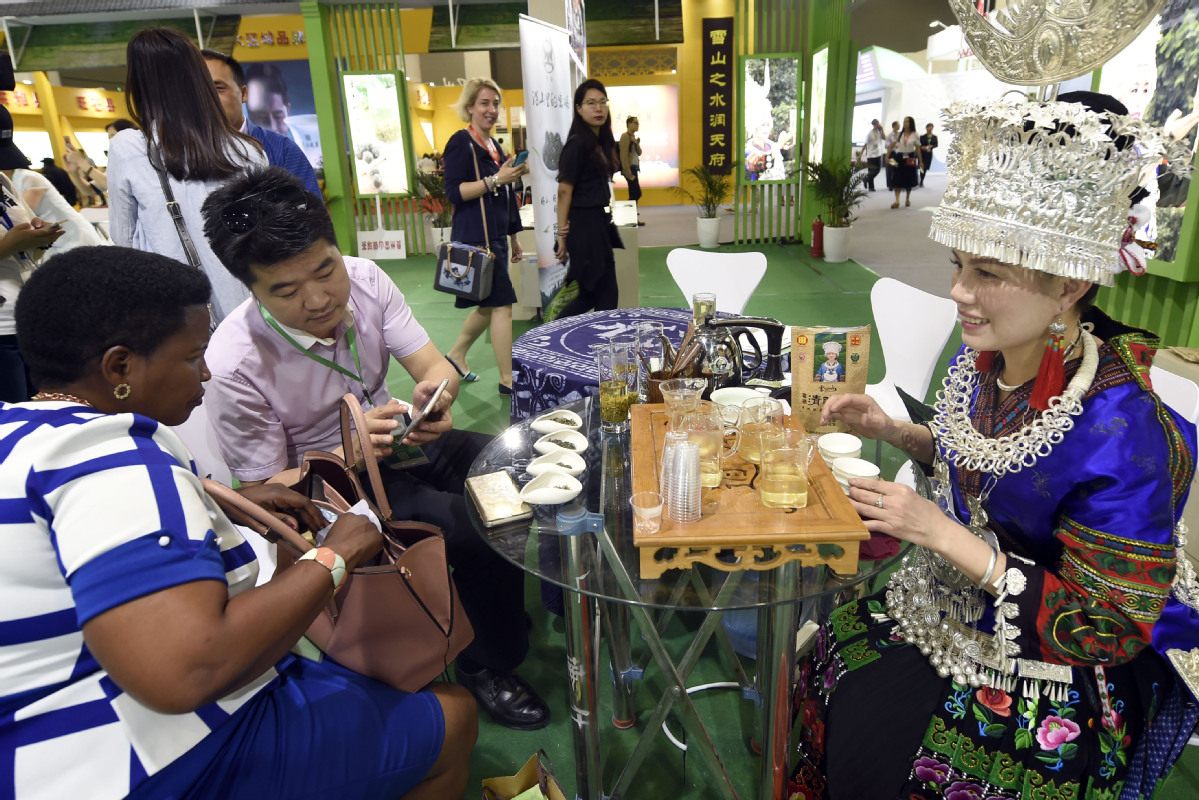Chinese tea exports stable as demand firm, potential huge
By Ren Xiaojin | China Daily | Updated: 2018-12-17 11:10

BRI opportunity adds to glad tidings from Europe, US, Africa and Malaysia
China is expected to export 300,000 metric tons of tea leaves by the end of 2018 out of 2.8 million tons of output. Demand in Europe, the United States and emerging economies such as Africa remains stable, according the China Tea Marketing Association, a non-government industrial union.
"Traditional destinations like Europe, the United States and Africa will remain the dominating consumption destinations, but there is more potential to dig," said Wang Qing, head of the CTMA. "Exports are at a stable level of around 300,000 tons this year, with total value reaching about $1.5 billion."
Wang said the Chinese tea industry was facing a new "historical opportunity" as the country has been working on the Belt and Road Initiative.
Zhang Liming, deputy head of the Tea Industry Association of Guangdong, also predicted a stable export performance this year.
He said although the markets in the Belt and Road Initiative economies have increased, taking costs into consideration, the export volume will remain at a stable level at about 300,000 tons.
According to China customs data, in the first three quarters of 2018, China exported 263,000 tons of tea, up 0.29 percent year-on-year. It was worth $1.28 billion, up 10.41 percent year-on-year.
Green tea was the most popular category among various teas that China offered to the world, accounting for 83 percent of the exports.
Volumes of pu'er tea exports grew almost 21 percent although in terms of absolute figures, the variety accounted for just 2,204 tons.
Malaysia appears to be a promising market for pu'er exports, according to insiders. "Before 2000, Malaysians didn't drink pu'er. But now, it's the most popular Chinese tea in Malaysia," said Liu Junguang, head of the Tea Trade Association of Malaysia.
He further said on average, a Malaysian consumes 900 grams of tea annually, and the national consumption exceeds the national production volume, making it a potential export market for Chinese tea companies.
"Malaysia is strongly in favor of the Belt and Road Initiative. We hope more Chinese tea companies can bring more tea, especially those from Mountain E'mei, to Malaysia," he said.
"Export data of the last five years shows that the compound annual growth rates of export volume and value were 2.19 percent and 6.6 percent respectively," said Wan Fuxiang, deputy head of the tea promotion committee of the China Association for the Promotion of International Agricultural Cooperation.
"The number has been growing but just at a less satisfying pace. To top the export number, we need to first expand the market and second, (we need) to increase the value."
























